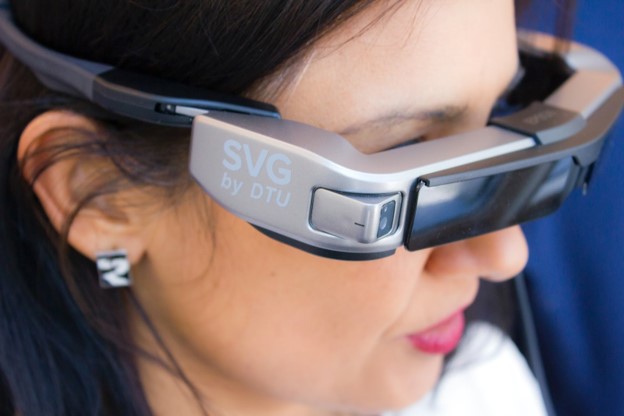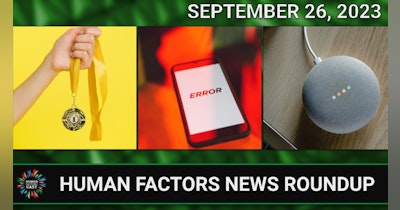Listen to this blog post.
A Deep Dive into Using Mobile Technology to Monitor Mental Wellbeing
Hello folks, and welcome back to another of our Wednesday deep dives! This week we will be further exploring the exciting world of wearable technology in healthcare.
Wearable Tech + Health
Wearable technology is no longer the stuff of science fiction: it seems almost everyone has heard of the Fitbit or Google glass or has used a pedometer or other health app on their smartphone. What used to be considered wild imaginings is now commonplace. The idea of using wearable tech to monitor your physical and mental health is more than reasonable; most of us already do this in some form.
Health and fitness apps are a huge market that has only continued to grow over the past year. While you only need a smartphone for the majority of them, some of the apps have integration available with other wearable devices, such as smartwatches. Many healthcare providers offer their own apps to help you keep track of symptoms or health events between scheduled appointments.
Wellness apps are just the tip of the iceberg: there is wearable technology that gauges user emotion through voice recordings, keystrokes, and amount of sleep. Electronic fabrics are being developed to help with the diagnosis and treatment of epilepsy, breast cancer, and other illnesses. Smart contact lenses are being developed to monitor and assess blood sugar levels.
Researchers at Carnegie Mellon have created wearable technology that mimics a bandage: thin, flexible, and easily applied in a single-step process. Some of the applications they envision for their tech include a mask for temperature sensing, a patch that detects the food you consume, and a bandage that tracks how the wound is healing and lets you know via color-coded LED lights that change from red to yellow, to green.
While many prototypes of wearable tech are moving from the lab to practical testing out in the world, the possibilities for applications of this new technology are only just starting to be explored. We have even discussed the exciting future of wearables on the show. Mind-reading smart glasses, sweat-sensing glasses, goggles that modulate brain waves to eliminate chronic pain, gadgets that let you listen to your body and with your body (not just your ears!), and images of your future self that adjust based on what you do today are just a few of the up and coming wearable inventions being refined for production and commercial use.
The technology these products use can be repurposed for other interests and goals. It will be fascinating to watch how wearable technology advances over the next decade.
Challenges to Integrating Health and Technology
Image source: National Cancer Institute | Unsplash
Human Factors professionals know that it is essential that products take into account the human element. With wearable tech in healthcare, potential challenges go beyond “How will it distinguish between the user watching a horror movie versus having an anxiety attack?” and encompass how the technology will impact direct service providers, end-users, and the healthcare system as a whole.
Direct Service Providers
A concern that is not talked about nearly enough is the ever-worsening shortage of healthcare workers. Research conducted in 2019 by the American Association of Medical Colleges (AAMC) found that the percentage of voters who had trouble finding a physician went up from 25% to 35% between 2015 and 2019. New data from the AAMC indicates that we may face a shortage of between 54,100 and 139,000 physicians in America by 2033.
The shortage of healthcare workers seems to be primarily driven by two factors: many current physicians are nearing retirement age and the nation’s demographics are shifting to reflect an aging population. Physician shortages are expected to hit rural areas the hardest.
Unfortunately, we have already been treated to a taste of what healthcare professional shortages will be like over this past year and a half. During the COVID-19 pandemic, over half of the states in the United States dealt with a critical shortage of nurses, doctors, and other staff. This meant that it took longer to see a doctor or get a medical consult, there was a lack of bed space, the hospital staff was overworked, and some patients could not receive adequate medical care. Some healthcare workers have been so negatively impacted by their experience with understaffing, they left their professions.
With understaffing becoming the norm at hospitals and other healthcare programs, workers have even less time to devote to each individual patient under their care. Wearable technology promises to provide more data to both patients and providers, but how useful is the data if direct service providers do not have time to properly assess and analyze the data? Concerned patients may insist on testing that is not needed because their tech gave them a false positive due to a glitch or they interpreted the message they received from their wearable technology as concerning despite their care provider’s assurances that there is nothing wrong with them.
Healthcare worker shortages mean that time will be even more valuable to physicians and other healthcare providers. Care will have to be taken to ensure that advances in wearable technology do not put undue stress on our already strained healthcare system.
|
READ MORE |
Adoption by End-users
For wearable technology to provide its benefits to patients, they must use it. In general, younger generations tend to more easily and enthusiastically adopt new technology than older generations. While this bodes well for the future medical care of those born after 1964, it is the older generation who would benefit the most from using wearable technology. This is because they are more likely to experience serious health events and multiple chronic health conditions. Wearable technology creators will need to keep Baby Boomers and the Silent Generation in mind when considering product design and implementation so that they can increase adoption among these age groups.
Of course, whether or not an individual will adopt something new is dependent on more than just age. A 2017 study in Turkey looked at factors that impact a consumer’s intention to adopt internet of things (IoT) products in healthcare. They found that when it came to perceived ease of use, men were more influenced than women by perceived advantage, image, perceived privacy risk, and perceived vulnerability (women depended more on compatibility and trialability).
Another empirical study found that usage intention has a positive association with perceived control, interactivity, and the user’s own tendency towards innovation. Interestingly, the perceived cost had no significant impact on whether or not a user intended to use the device. This may be because wearable tech for wellness is typically integrated with technology users already own or intended to get for other functions as well.
One of the first behavioral studies of the adoption of wearable technology for healthcare found that technology, health, and privacy perspectives are the primary factors that shape a consumer’s decision regarding whether or not to adopt the new wearable tech. Further, they found that consumers who use fitness devices prioritize hedonic motivation, functional congruence, social influence, perceived privacy risk, and perceived vulnerability (more recent research has found that privacy concerns are no longer a barrier to the adoption of wearable tech devices). In contrast, they found that consumers who use medical devices focused more on perceived expectancy, self-efficacy, effort expectancy, and perceived severity.
Research by Curtin University in Australia found that the use of mobile health apps, which appear to be an integral part of wearable tech, was hindered by consumers’ lack of knowledge around the storage and security of their data and the time it took users to get set up on the app. Cybersecurity and privacy are major issues that companies and individuals must tackle, as we have covered recently in our shows about how cybersecurity affects smart farms and IEEE’s 2021 Cybersecurity and IT Failures Roundup. Hacking and cybersecurity have already made our top news stories this month and were a big topic of interest after the Colonial Pipeline ransomware attack in May.
Data Overload
There is some concern that wearable technology for healthcare might provide users with too much information, especially if those users do not have underlying health concerns that would benefit from tracking this sort of information. There are individual differences as to what is healthy or normal for each person; health feedback that may seem to indicate a potential problem might actually be insignificant in context.
When people think they may be experiencing a major health issue, they usually will schedule a doctor appointment or visit urgent care to identify and address it. (Of course, there are also many people who will search for their symptoms on the internet and conclude they have this or that terrible disease.) This relates back to the challenges faced by direct service providers as wearable tech for healthcare becomes more comprehensive and commonplace: with more people using the healthcare system, doctors, nurses, and other healthcare practitioners will be stretched increasingly thin. As worried healthy people fill up hospitals and other healthcare facilities, there is a greater risk of those facilities being unable to appropriately care for seriously ill patients who they would otherwise be able to see.
Part of the problem of having so much data available to patients and providers is that the systems for storing and organizing this data have not yet caught up to the sheer volume of it. There are also issues of system integration (making sure that data from wearable technology and other devices is compatible with the technology used by healthcare providers) and how to extract important and relevant information from the data for easier use by patients and providers.
The Human Factors Connection
Image source: Quang Tri NGUYEN | Unsplash
With so many different wearable tech devices and programs already in use by the population (and more landing on the market every day), there is a big opportunity for companies to create a way to combine all of this data so that the end-user can look in one place for the consolidated information. Having to check multiple programs and devices for oftentimes repeated or slightly different information can get tedious and lead to user disengagement. Instead, human factors professionals can consider how to bring all of the data together and work with healthcare providers to determine how best to present the information to patients and providers. This will make the technology more useful to everyone and help maintain user engagement.
Machine learning is also playing a big role in wearable technology in healthcare. Fitbits can be used to help manage diabetes by tracking blood glucose, exercise, sleep, food, and more. Artificial intelligence (AI) startup Mindstrong is exploring how to use AI and digital phenotyping to assess a user’s emotional state based on their behaviors while using their smartphone. A recent study of patients with Hepatitis C found that long-term medication adherence drastically increased with the use of a mobile health platform that included an ingestible sensor and wearable patch. Human factors professionals can continue studying how to improve machine learning so that end-users can achieve their desired outcomes and live better, healthier lives.
Of interest to many human factors professionals working with wearable healthcare technology is how to drive user engagement so that the product benefits the end-user as much as possible. A common way to do this is through push notifications. Attitudes towards push notifications tend to be divided: some believe they encourage user engagement while others believe too many push users away.
Interestingly, research from 2017 found that more frequent push notifications may encourage users to interact more with a health app’s content without negatively impacting their engagement. Another study in 2018 found that tailored health messages in the push notifications were associated with greater engagement in the mobile health app.
While push notifications may be useful for health and wellness purposes, they have been shown to decrease our productivity. This is a concern that needs to be addressed when working on wearable technology for healthcare. It is important for us to always consider the context a device will be operating in when it is in use in the real world, and this includes how it will impact things like our work, daily chores, or other items on our to-do lists.
When it comes to wearable tech for healthcare, we will need to keep in mind the context it will be used in, the other technology it will need to work well with, how we can consolidate the data into easily digestible information, and how to drive user adoption and engagement.
______________________________________________________________________________________________________
For more Human Factors Cast content, check back every Tuesday for our news roundups and join us on Twitch every Thursday at 4:30 PM PST our weekly podcast. If you haven't already, join us on Slack and Discord or on any of our social media communities (LinkedIn, Facebook, Twitter, Instagram).
Explore Some More
Episode Links
- Can we use Mobile Technology to Monitor Mental wellbeing?
Wearable Tech + Health
- 7 Effective Wellness Apps I Didn't Immediately Delete Off My Phone
- The best wellness apps for iOS and Android
Challenges to Integrating Health and Technology
- Analyzing older users’ home telehealth services acceptance behavior—applying an Extended UTAUT model
- Consumer preference to utilise a mobile health app: A stated preference experiment
- Inter-generational Effects of Technology: Why Millennial Physicians May Be Less at Risk for Burnout Than Baby Boomers
- Understanding factors influencing the adoption of mHealth by the elderly: An extension of the UTAUT model
The Human Factors Connection
- An Analysis of the Effects of Smartphone Push Notifications on Task Performance with regard to Smartphone Overuse Using ERP
- Dismissed!: a detailed exploration of how mobile phone users handle push notifications
Photo by Alex Green from Pexels (left)
Photo by Karolina Grabowska from Pexels (right)

























